Smoking meat is a demanding task and quite frankly it’s not for everyone.
The amount of patience required to do this thing would be enough to get most of us screaming with anxiety but once you’ve done it at least once, you’ll be convinced you need to smoke meat all the time!
But it becomes an even more problematic work when the type of smoker you’ve selected isn’t in line with your type of cooking style or what you want to accomplish, so let’s look at horizontal vs vertical vs offset smokers and EXACTLY when to use one over the other.
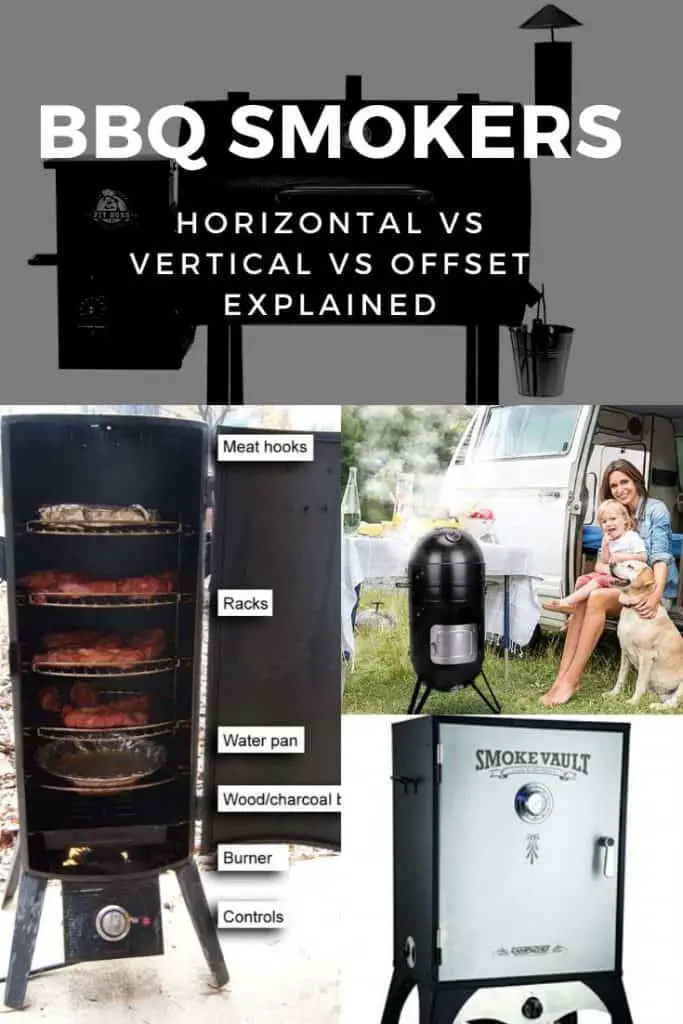
Here are my favorite brands of each type so you can get an idea of what they look like:
| Smoker type | Images |
| Best vertical smoker: Sougem Charcoal Smoker Grill |
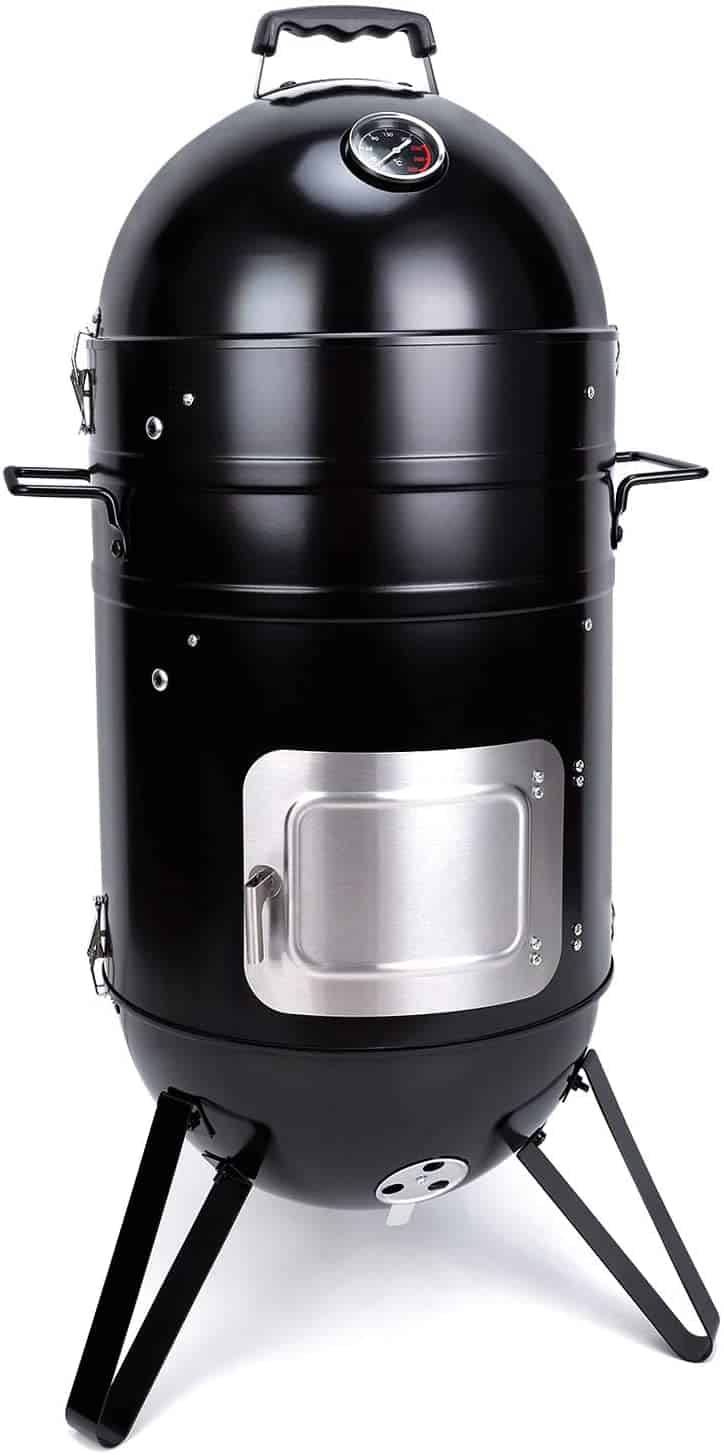 (view more images) |
| Best offset smoker: Char-Broil Oklahoma Joe’s Highland Offset Smoker |
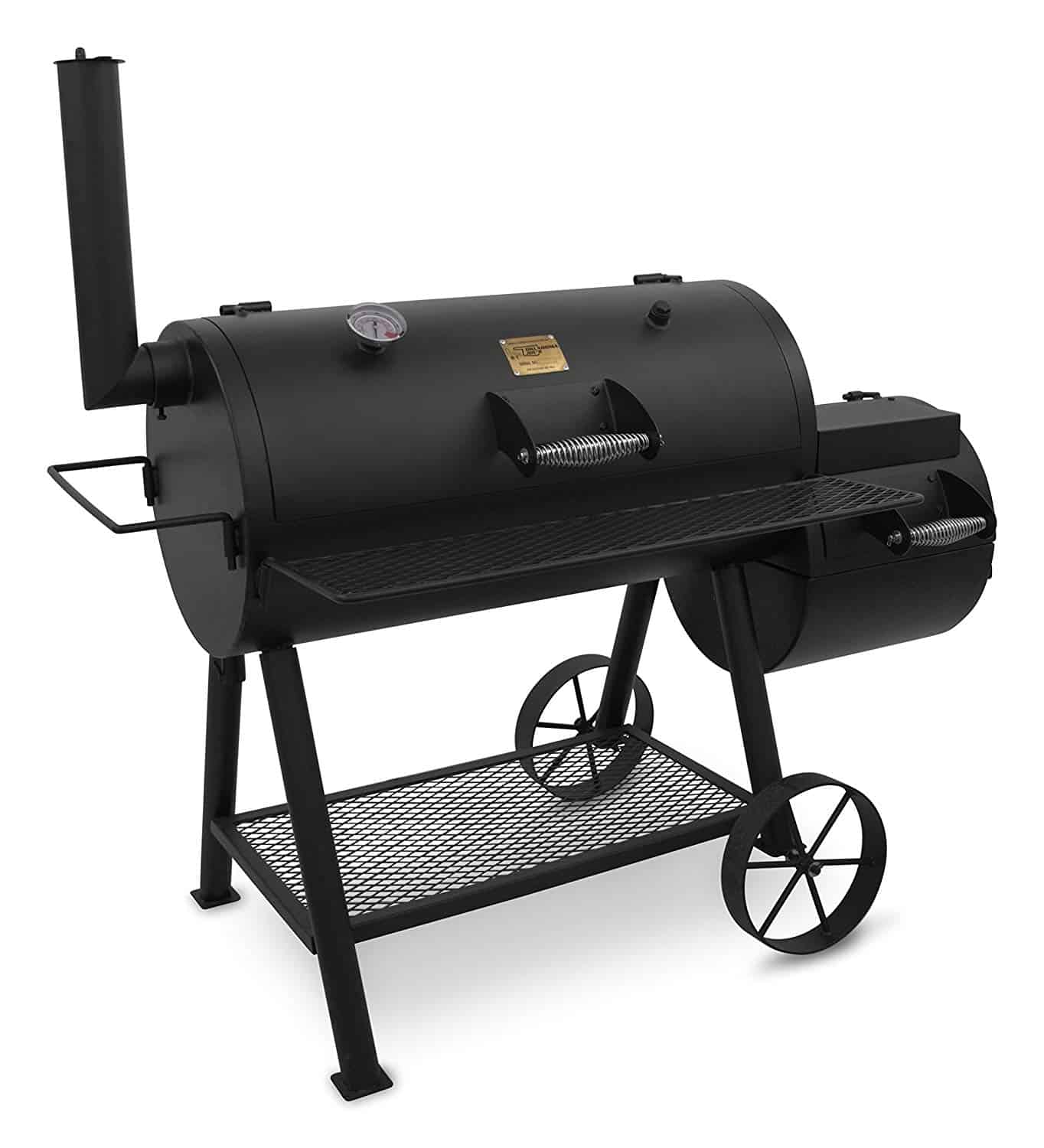 (view more images) |
| Best horizontal smoker: Pit Boss 71820FB BBQ Pellet Grill and Smoker |
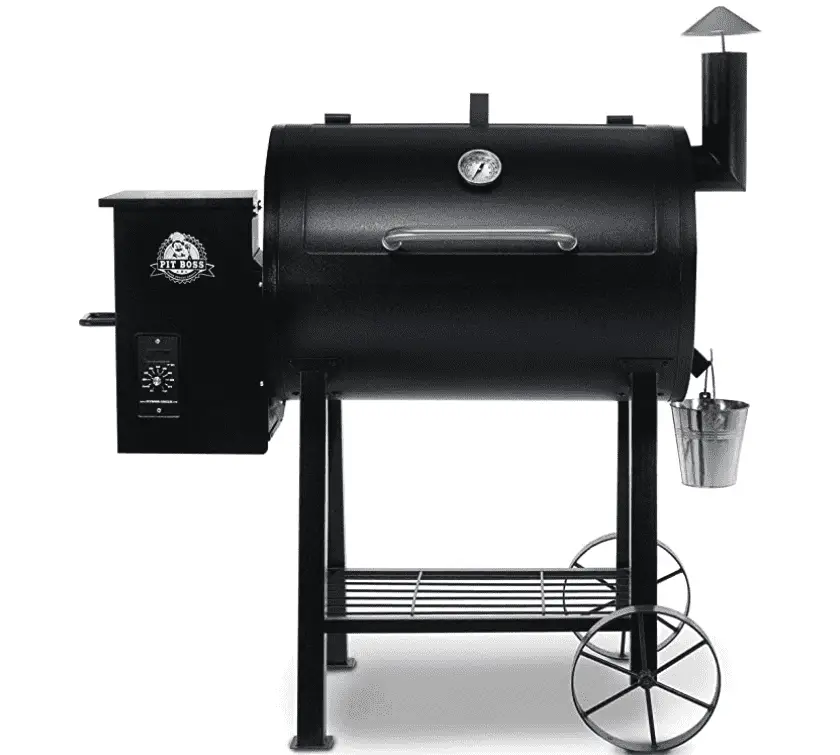 (view more images) |
In this post we'll cover:
What is the main difference between a vertical and horizontal smoker?
The very obvious difference between the two is this:
- The vertical smoker stands upright, meaning it has a vertical orientation.
- A horizontal smoker has a horizontal orientation. It’s the type of BBQ shape you’re used to seeing.
Offset smokers have a horizontal orientation and they can usually smoke AND grill while there are no vertical grills, only vertical smokers.
That would defeat the purpose of it being upright because it’s using the natural flow of heated air to move the smoke and heat upwards to your meat.
It’s easier to maintain an even temperature with a horizontal smoker because you don’t need to open the smoking chamber when you add more fuel, so it’s much easier to refuel than a vertical one.
Is offset the same as a horizontal smoker?
An offset smoker is a vertical smoker with a barrel-like cooking chamber and a slightly lower firebox connected from the side. This allows the heat and smoke to come from beneath the smoking racks and flow through the cooking chamber to a chimney on the other side.
So not all horizontal smokers are offset, but all offset smokers are horizontal.
BUT…
I’m going to tell you why the best buy for beginners is probably a vertical smoker!
If you’re looking for a full guide on what smoker to buy as a beginner so should check out these tips you’ll find invaluable when starting out. I wish I’d known these when I was just a beginner :)
Vertical water smokers (Orientation: Vertical)
Vertical water smokers are easy to use with a simple design. They’re designed by following the laws of physics regarding heat transfer and water cycling.
PLUS, they’re also the cheapest type on the market.
The best I found is this charcoal grill water smoker combo from Sougem, which gives you plenty of room to work with and is very affordable:
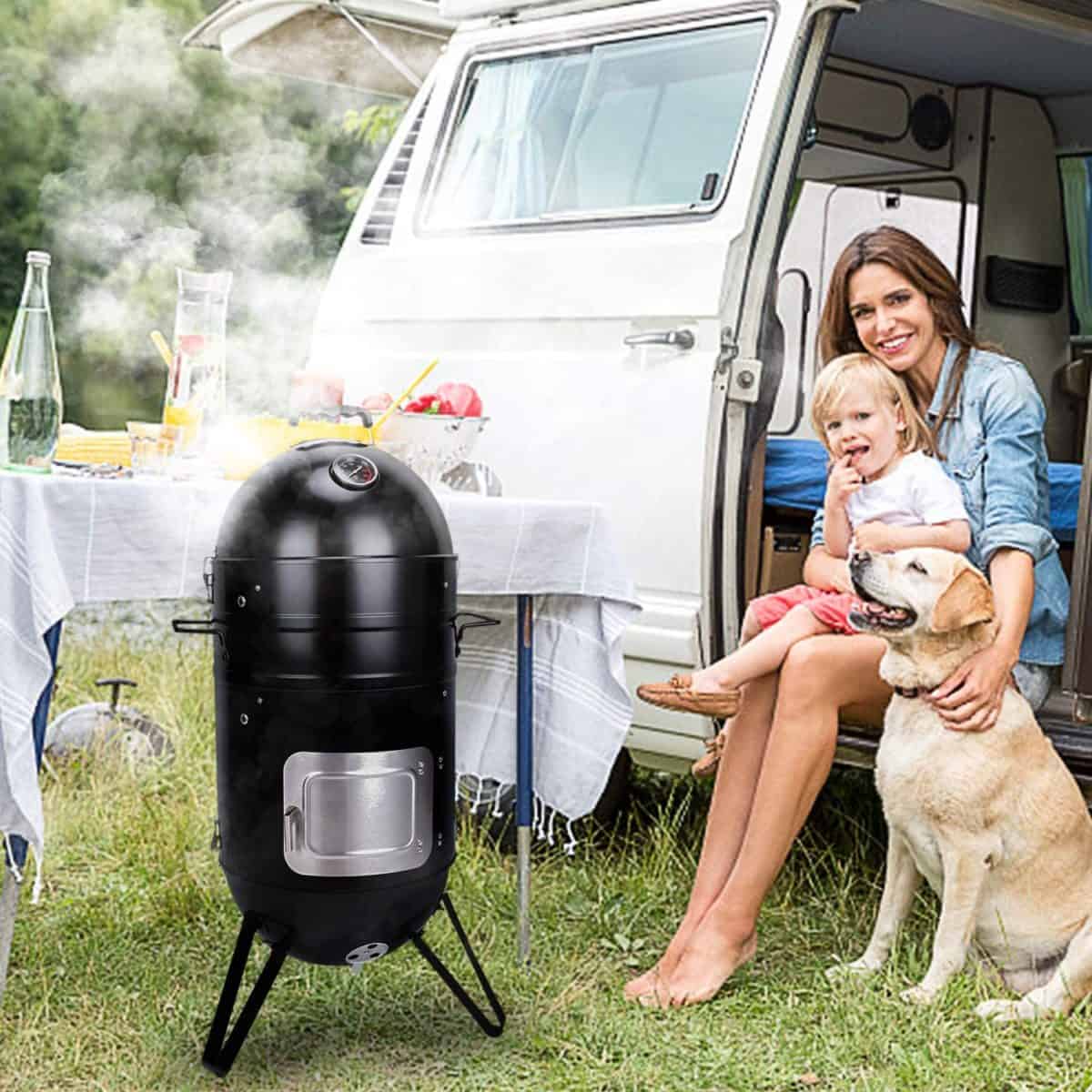
This is in fact called a bullet smoker because of its unique “bullet” like shape.
How do vertical water smokers work?
A vertical water smoker is made up of 3 parts which are actually compartments:
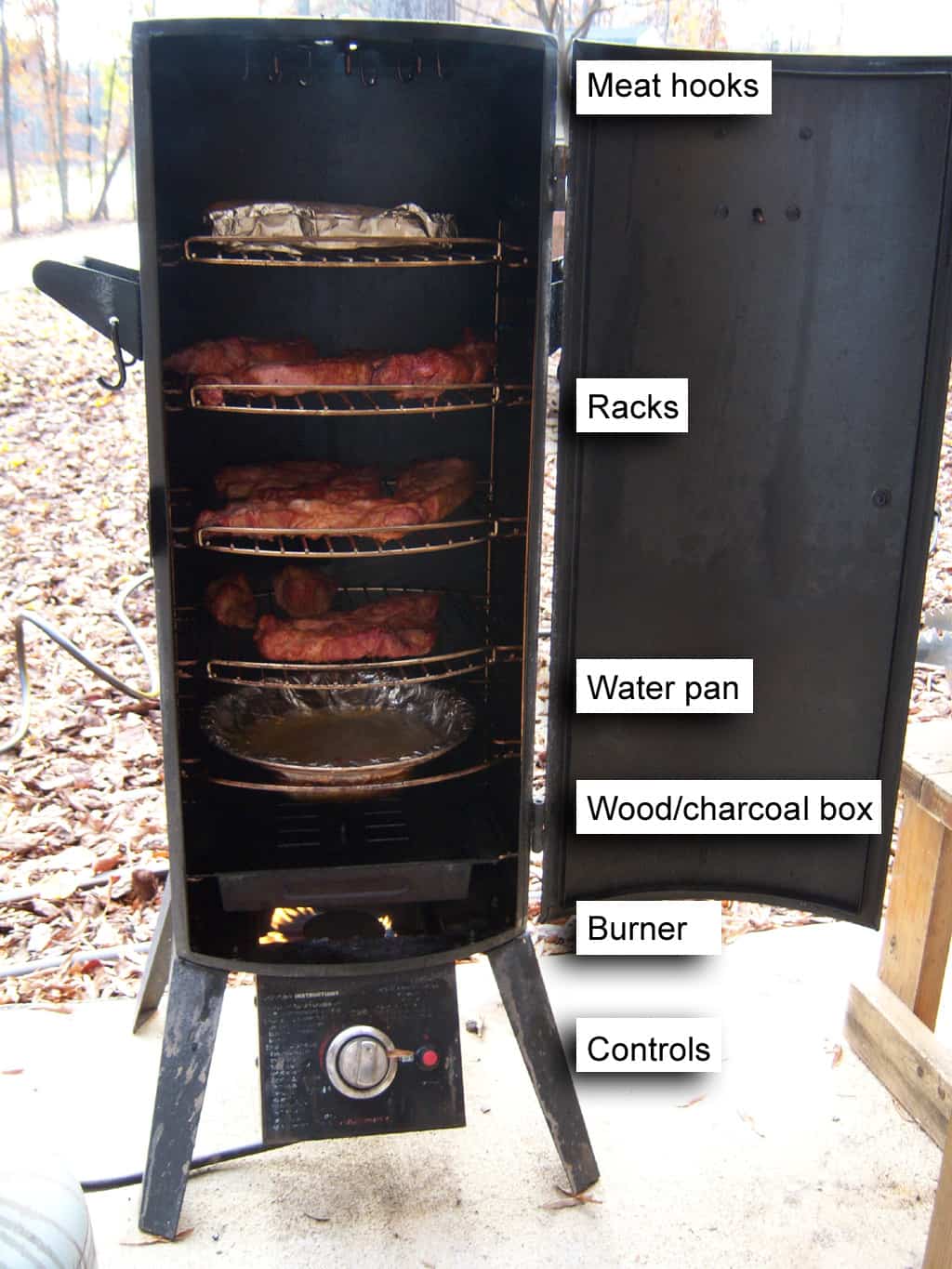
- The bottom section serves as a heat source, like charcoal wood, gas, or even a large steel hotplate coil for electric smokers (I’ll get more into those in a bit).
- One compartment above it sits the water pan, necessary to moisturize the air inside the smoker so you’re not just using dry heat like on a grill. This way the meat becomes soft and tender as you smoke the meat using low temperatures for days (or WEEKS!).
- Then we have the part you care about most, the smoking chamber or compartment where the meat sits on top of a stainless steel grate.
It’s very easy to operate because all you have to do is
- build a fire,
- fill the water pan,
- and throw on the meat
(check the thermostat on the lid to adjust the temperature or you can also use a digital thermometer controller for automation).
Are vertical smokers any good?
These grills are excellent and easy to use, plus they give the meat that juicy texture and smokey flavor.
I recommend vertical grills for high-heat grilling and searing and most popular models use wood and charcoal as fuel so you know you’re getting that classic smoker BBQ flavor.
If you’re a true beginner, the vertical electric and gas options are the easiest to control the temperature with so you’re less likely to make a temp mistake, burning and overcooking the food.
The classic charcoal type is a bit harder to control and you might have to keep checking in on the food. But, the upside is that the taste is unrivaled.
Advantages of a vertical smoker
- Because most of the size of the thing is going up, it takes up way less space so you can fit it on almost any patio or cram it in your outdoor kitchen (or even balcony!).
- They also need SIGNIFICANTLY less fuel to operate, plus they’re cheaper to buy so newbie smokers often choose them.
- They’re PERFECT for high-heat searing and grilling.
The disadvantages
What most people complain about with vertical smokers is that they lose a lot of heat.
Heat is necessary to cook the meat. But, each time you open the lid to check how far along you are, some of it’s lost.
This issue has been addressed with a digital thermometer controller up top, but you have to trust that your temperature and cooking time is spot on.
The small space in the smoker also means that you can only smoke a limited amount of meat in it.
Then there’s also the point-of-access issue because the way the smoker is designed only allows you to put in or remove the meat in one direction.
With only 2 layers of grates where you can put the meat onto, you’d have to remove the upper grate first before you can get to the lower one. This causes more heat to escape the chamber.
What to look for in a vertical smoker
The first thing to look for is great metal quality and durable construction. Look for a thick metal with good seals, so that air doesn’t escape. Plus a good ventilation system is key to great smoked food.
Check out the accessibility. The smoker should be easy to load up with charcoal or wood. You also want to make sure there’s a low risk of burning yourself. Basically, the smoker must be easy to use and load.
Cooking Space & Racks
The number of shelves and cooking racks is extremely important. This determines how much food you can smoke at once. If you know you’ll often smoke for large groups, you need a larger smoker.
But, you’ll probably want to get a horizontal smoker if that’s the case.
So the ideal candidate for a vertical smoker is to look for a compact one that also has hooks.
You don’t realize how important the hooks are until you want to hang cornish hens and even ribs and sausages to smoke them while cooking other foods on the racks simultaneously.
The best smokers have about 8 racks and a couple of hooks. This is plenty of space. Look for 2000 square inches of total cooking space if you like to smoke often.
Temperature Range
You need to consider how flexible you want your temperature range to be.
- If you like to sear your steaks to impress your friends, then you need a smoker that can handle up to 500 degrees F.
- But, if you prefer poultry like chicken and turkey, the highest temperature you need is about 400 degrees F.
The food you cook determines the heat level you need. If you like to smoke low and slow, then the temperature range isn’t such an important feature.
Weight and size
It’s up to you how big or small you want your smoker to be. The weight is important though. The heavier the smoker the better, because it means that it’s made of thickly gauged steel. This is good in terms of heat retention during the cooking process.
The bottom line is this: the thinner aluminum-type smokers just don’t smoke as well as their heavy counterparts.
After all, it’s better to invest in a smoker that’s going to last you for at least ten years as opposed to a thin flimsy one that’s going to last only a couple.
One thing you’re sacrificing with heavy smokers is portability. But, once you set it up in the perfect spot, there’s no real need to move it around too much.
UNLESS you want to take it out to go camping or something.
How to get the most out of a vertical smoker
Well, now that you can see all the pros and cons of a vertical smoker, let’s look at how to get the most out of it.
First of all, it’s all about maximizing flavor. The best way to get the best flavor is to experiment with wood chips.
Wood chips come in many different flavors, so there are lots to try. You can even blend woods to create unique flavors for different foods.
Second of all, make sure you take it slow. Even the most experienced pitmasters can make mistakes.
Start with easy recipes like poultry or ribs. Pork is especially easy to smoke. Even if you make a few small errors, pork meat is less temperature sensitive so you can still eat it. Follow the recipes and don’t overdo it with the woods.
Finally, use water to distribute the heat evenly. The hot steam helps spread the smoke evenly so your food is well flavored.
Steam is also good because it prevents the meat from drying out too much during the smoking process. The secret is to add boiling water to the tray, never cold.
How to use vertical smokers
According to Robert Sherman, there are several steps to follow to use the vertical smoker correctly. A good vertical charcoal smoker is going to give you amazing smoky flavored food.
- start your smoker and set the temperature probes you have available
- open the air intake vent
- open the chimney vent
- now light the chimney
- adjust the heat depending on what food you are cooking
- place the food in the smoker
- add your wood chips, pellets, or briquettes
- make sure to rotate the food
- add some water with a spray bottle to keep food moist
Offset smokers (Orientation: Horizontal)
I have to say, although an offset smoker is much larger than a vertical, it has a much simpler design (check the smoker diagram here).
It consists of two parts:
- the firebox where the heat source is created via a gas, charcoal, or small chopped wood.
- the cooking chamber where the meat is smoked.
It usually has a long barrel or box design with a lift or slide door and a smokestack for the smoke and heat to escape through.
Both parts are connected so that heat from the firebox will enter the cooking chamber. There it’s controlled by an air intake valve.
I love the Oklahoma Joe’s brand, and this Highland offset model is a very good place to start with a great looking vertical offset smoker for your patio:

How horizontal offset smokers work
Everything starts at the firebox where you light up the fuel (i.e. gas, charcoal, or wood). That’s where you create the heat source.
The heat then travels to the cooking chamber via the small hole that links the firebox and the cooking chamber and heats up the meat.
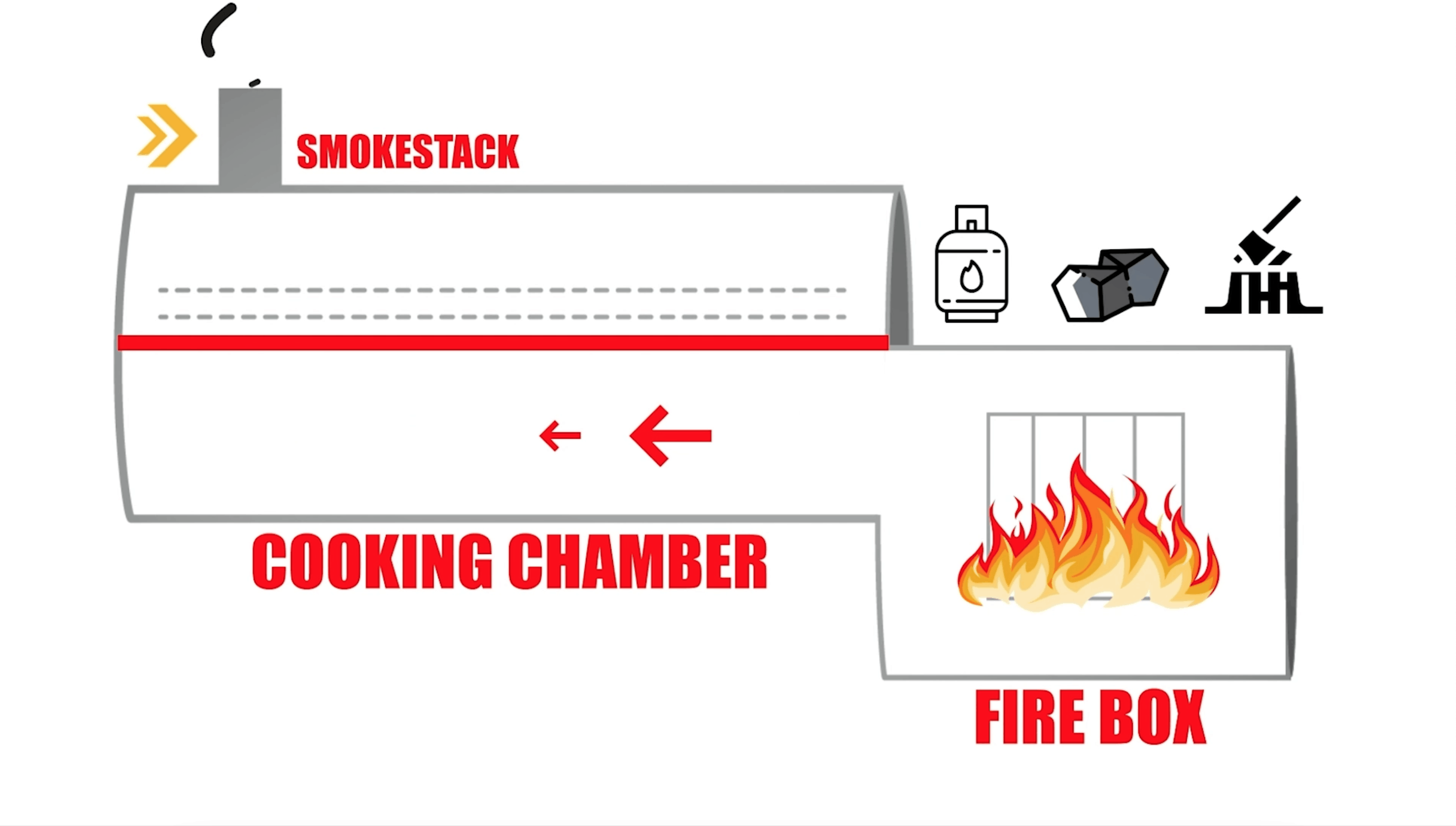
The heat and smoke escape through the smokestack.
Some offset smokers are designed with a reverse flow thermal circulation configuration. That just means a sheet of metal is placed in the bottom of the cooking chamber to achieve this flow structure, but it can make a LOT of difference.
This equalizes the temperature distribution throughout the chamber. The heat travels back to the firebox (some of it escapes through the smokestack that has been relocated closer to the firebox as well).
This design is more efficient than the standard configuration and it solves the uneven heating (which can RUIN your meat).
Advantages of the horizontal offset smoker
With a high-quality design offset smoker, especially one that has the reverse flow thermal circulation configuration in it, you should be able to smoke meat almost perfectly and almost all the time.
Keep in mind, practice is mandatory if you want to get perfection of course.
The cooking chamber has a huge cooking space and an even larger volume. Therefore, you can also hang and skewer meat all over it and cook them at the same time.
A good offset smoker will also help you save on energy. It cuts some of the costs to operate the machine.
Horizontal smokers can cook food slowly at low temperatures. This offers that classic bbq flavor because the meat is well penetrated by the smoky flavor. The meat tastes juicy and moist inside and crispy on the outside.
These smokers use wood and charcoal so they give the most flavor. If you are after that authentic smoky flavor, then a horizontal device is perfect.
The disadvantages
While inexpensive offset smokers may sound appealing they can be so difficult to operate and will undermine your cooking abilities.
The unfortunate thing is that it’s hard to tell the difference between a good smoker and a bad smoker. Although, the reverse flow thermal circulation design is a very good indicator that it is a pretty good smoker grill and you should buy it.
Temperatures near the firebox in poorly designed offsets are on average 38° Celsius more than the cooking chamber.
So, heat transfer is not guaranteed and moreover, the materials used for these kinds of smokers are thin metal sheets which make it easy for heat to dissipate.
Never mind the money you spent on fuel consumption but what’s worse is that it creates uneven heating and will not cook the meat properly.
How do you maintain a constant temperature in an offset smoker?
One of the biggest challenges of using offset smokers is to keep a steady temperature. It takes a second of carelessness to burn your meat.
Here’s how to keep a steady temperature:
- if the fire is going out, open the dampers and allow more airflow
- make sure you add enough fuel
- keep adding more fuel (wood or charcoal)
- if the heat is too high, close the dampers
What to look for in an offset horizontal smoker
Before you purchase a smoker, there are several aspects to consider. Unfortunately, the only way to really tell if an offset smoker is good or bad is to test it.
A bad offset smoker leaks smoke at the device’s doors and through the connection between the firebox and smoking chamber.
The best smokers are well-engineered so it’s best to invest in a trusted brand and model.
Material and Insulation
This refers to the build of the smoker. Don’t buy a smoker made of thin metal because it is not durable and a lot of heat escapes.
Look for an offset smoker made from thick steel (1/4 inch thickness minimum). The smoker must also have proper vents to allow the oxygen to circulate.
Finally, look for food chamber doors. Good insulation or adding a welding blanket is also a must-have if you want your meat to turn out perfect every time.
Reverse-flow
Is reverse-flow actually better? According to some people, it is. Basically, heat is used twice, and the meat tastes juicier, it’s more moist and flavorful.
The reverse flow smokers use a baffle system. This draws heat and smoke under its cooking chamber and then recirculated over the meat a second time.
In this design, the smokestack and firebox are one the same end of the bbq.
What’s the advantage of a reverse flow smoker?
- There is even smoke distribution, which means even flavor.
- You don’t need to turn the meat when you cook it because the heat is distributed evenly, cooking the meat perfectly on all sides.
- The fat sears out of the meat so it’s healthier.
The reverse flow design allows even newbies to smoke the food perfectly every time because these smokers maintain their temperature much better.
Size
The offset horizontal models come in a variety of sizes. Make sure you measure the area you are placing it in. Leave enough space around the smoker to prevent fires or damage.
The firebox and grill grates can be quite large and protrude out of the grill, so you need extra space.
How to use a horizontal offset smoker
First things first, you need to light the fire. if you have trouble firing up the smoker, use a chimney starter.
- We recommend using charcoal as your main fuel ignition source. Use that chimney starter to get the fire lit faster.
- Once the coals are lit, dump them into the firebox.
- Once the charcoals are heated, add your wood.
- Place a few pieces of wood into the firebox. Don’t place them right on top of the coals, instead place them on the far right side.
- Once you notice the logs are dried out, then you can put them on top of the coals.
- Keep heating wood so you can have enough to keep the fire going long term.
Horizontal smokers (Orientation: Horizontal)
I would recommend the Pit Boss Grills 71820FB BBQ Pellet Grill and Smoker for that authentic charcoal flavor while still being very beginner friendly.
Pellets are probably the easiest method to get into smoking, although some will find it more satisfying to use real wood chunks or chips.
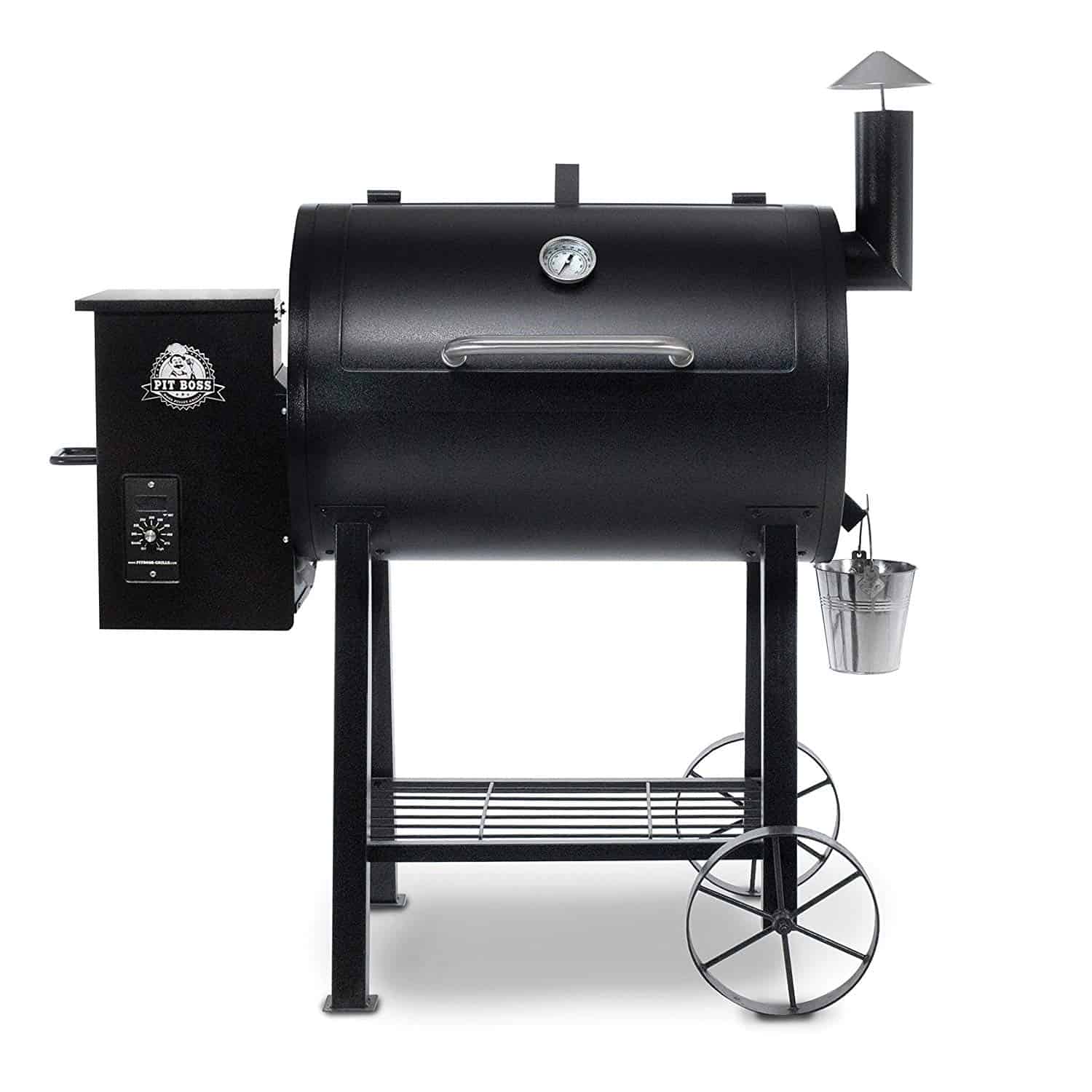
How horizontal pellet smokers work
Pellet smokers have 4 main parts and those are the hopper which is a storage bin where you put the wood pellets in.
The auger has a corkscrew design and slowly feeds the firebox with wood pellet fuel via a low-speed electric motor.
The firebox will produce heat and will travel into the cooking chamber to smoke the meat.
Some modern pellet smokers have sophisticated computer control systems that allow you to control the heat inside the chamber.
It even has a feature that reduces the grill’s heat to a holding temperature when the meat is done.
In this video you can see the difference between a vertical and a horizontal smoker:
Smoker grills such as offset barrel smokers, horizontal smokers, or pipe smokers, give you total control over the smoking process.
Technically there aren’t any real “bad” or “wrong” smoker grills. Although, there are poor-quality brands that you might want to avoid.
If I had to choose one, I would go with this vertical smoker from Char-Broil. I like the way the smoke flows through a vertical smoker. The Char-Broil is just such a durable grill for such a low price.
Vertical vs horizontal vs offset smoker costs
Let’s look at some estimative prices for each type of smoker. The costs of operating them more depends on the fuel source than on the orientation.
- Vertical smokers can be charcoal, but are also often electric smokers
- Offset smokers are always charcoal
- Horizontal smokers are often charcoal, but can also be gas-operated or can use pellets
Here are the different operating costs of running each of these:
- Charcoal smokers cost on average between $0.50-1.00 to run per hour
- Propane smokers cost on average between $0.40-1.00 to run per hour
- Pellet smokers cost on average between $1.20-1.60 to run per hour
- Electric smokers cost on average between $0.20-1.00 to run per hour depending on local electricity rates
Then there’s the initial purchase cost, which can differ slightly between options:
| Smoker type | Purchase price range (average) | Cost to operate / per hour (average) |
| Vertical smoker | $150-800 | $0.50 -$1.00 |
| Offset smoker | $150-1000 | $0.50-$1.00 |
| Pellet smoker | $300-1000 | $1.20-$1.60 |
| Electric smoker | $150-1000 | $0.20-1.00 |
Conclusion
There is no easy way to tell you which smoker grill is better. They all have their advantages and disadvantages.
So it may be best if you’ll read through the article and figure out which one is the best one for you.
Personally, I think they’re all good smoker grills provided you use them properly. Some meat types are good for a certain smoker grill while other meat types work well with other grills.
Essentially it all boils down to how much you’re willing to invest in these things. It also depends on what kinds of meat you like to cook. Also, take into consideration how frequently you need to smoke meat.
And of course, the last thing to consider is whether you use the grill at home or for your business.
Next, check out my Beginner’s Guide on How To Smoke Meat At Home

